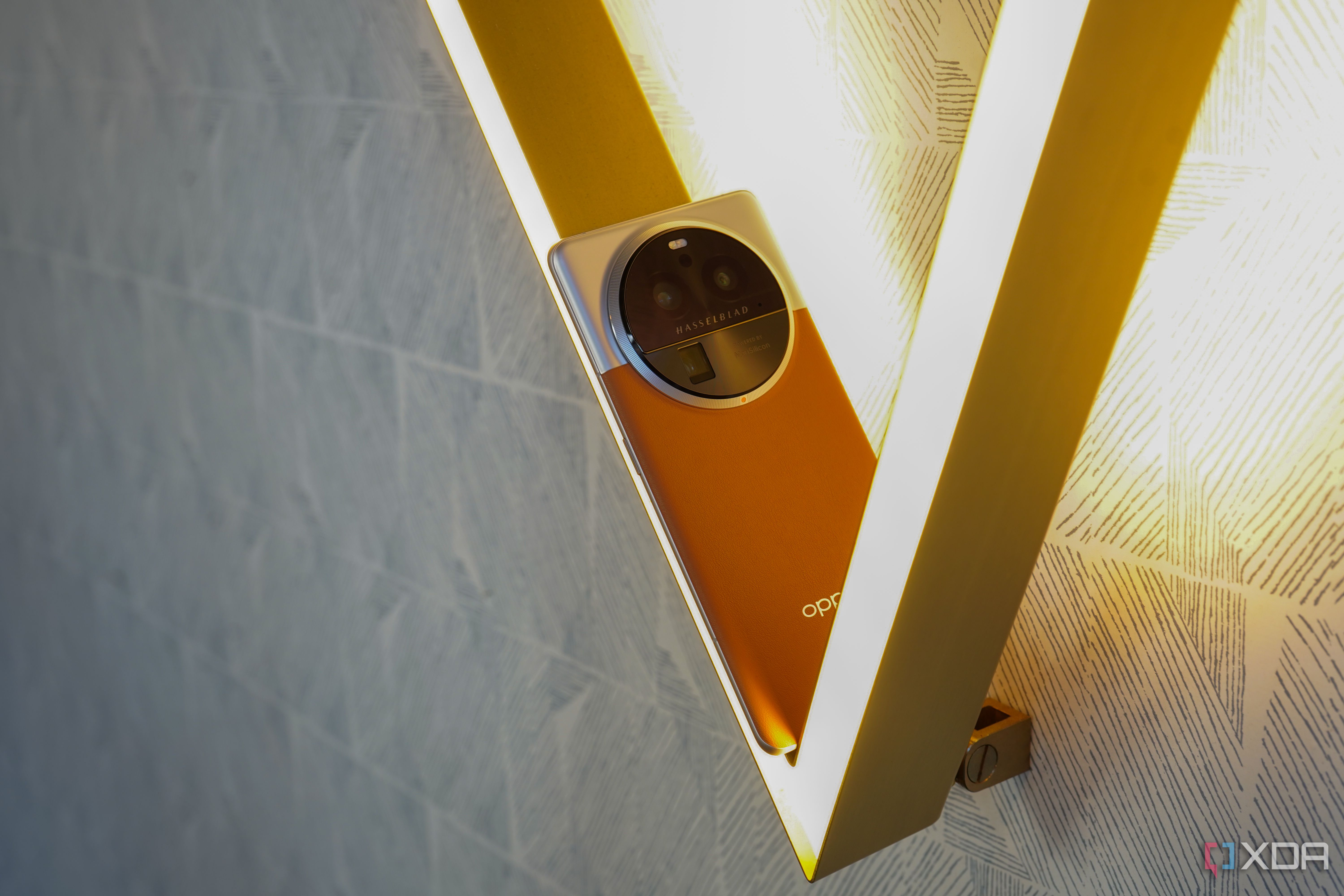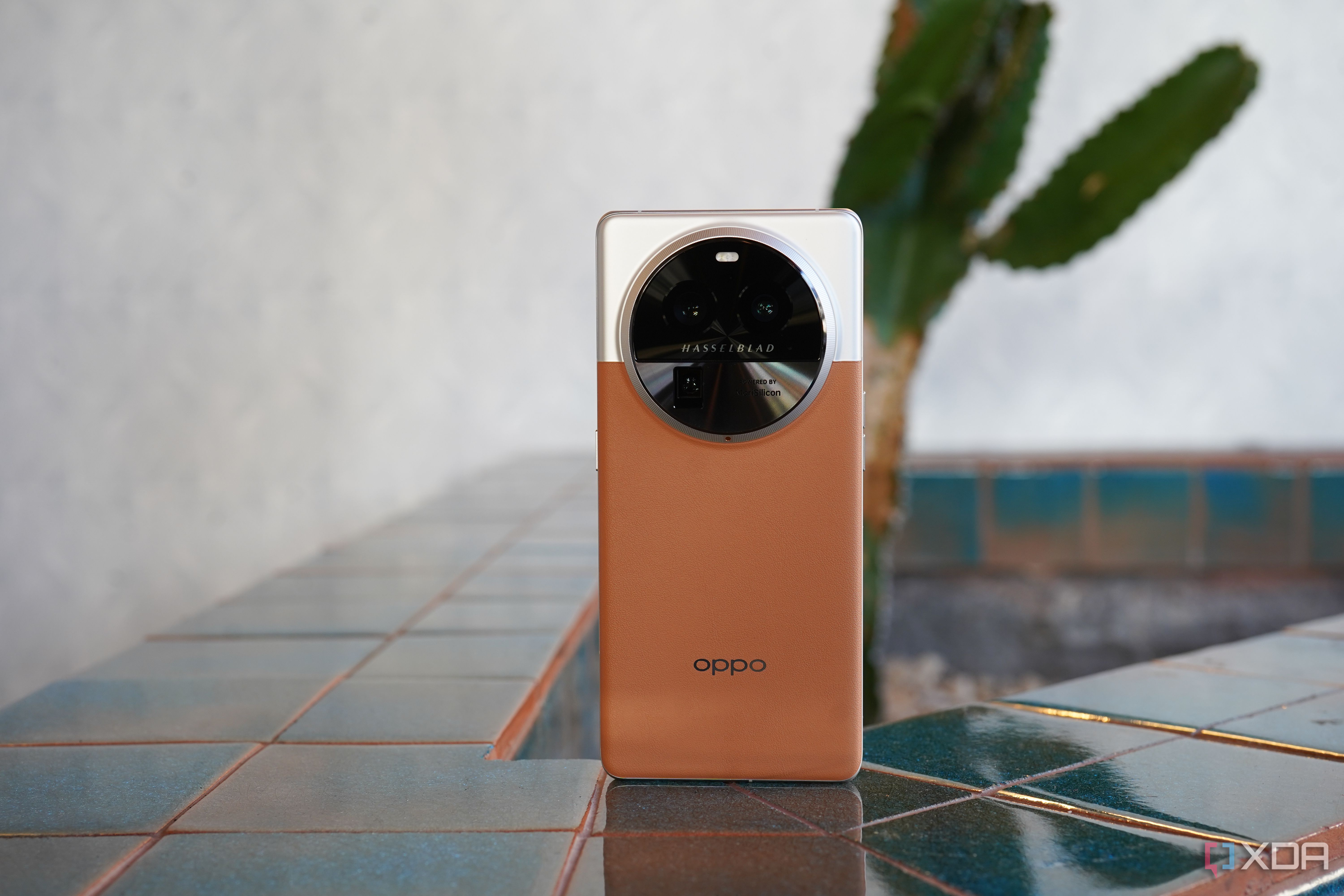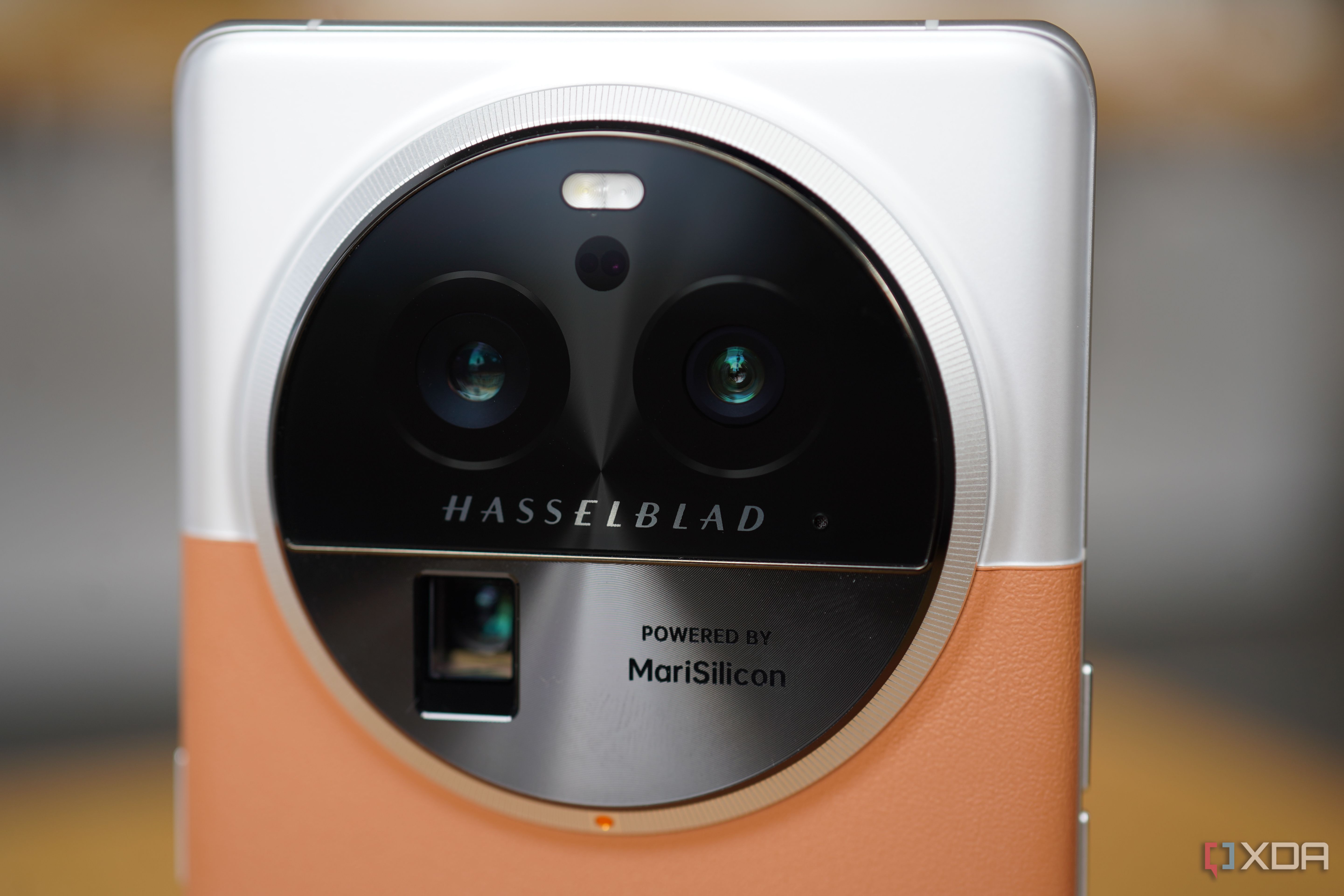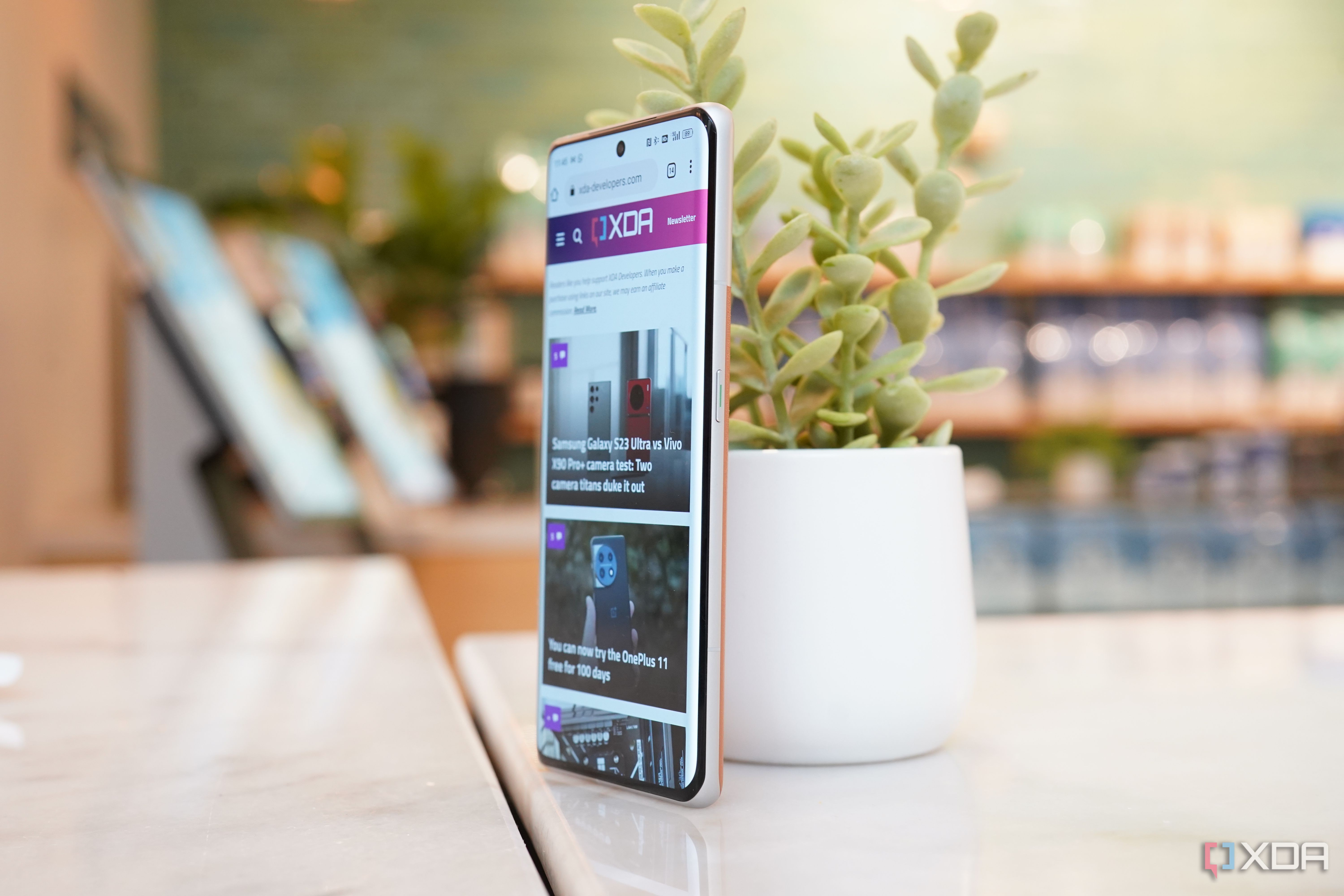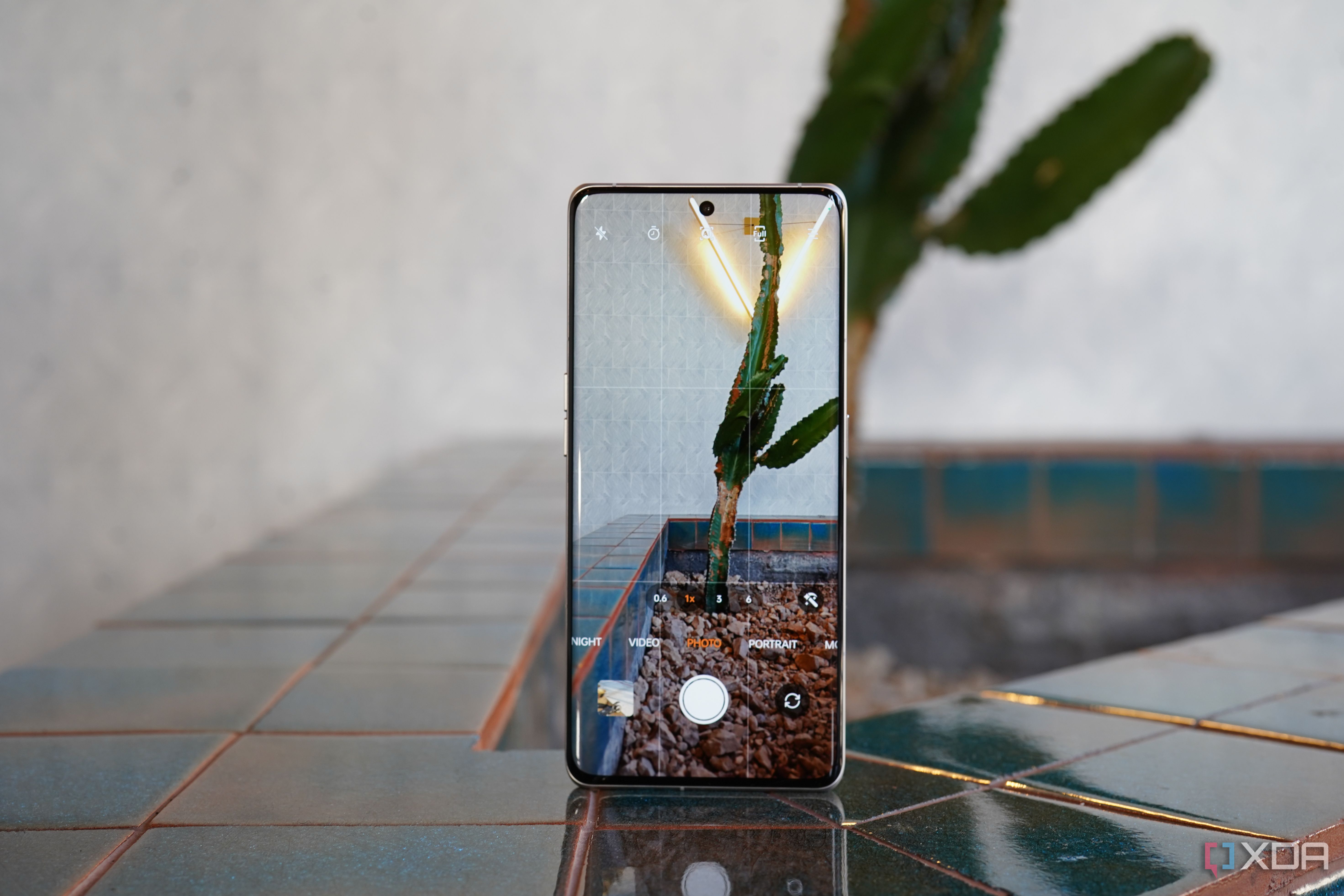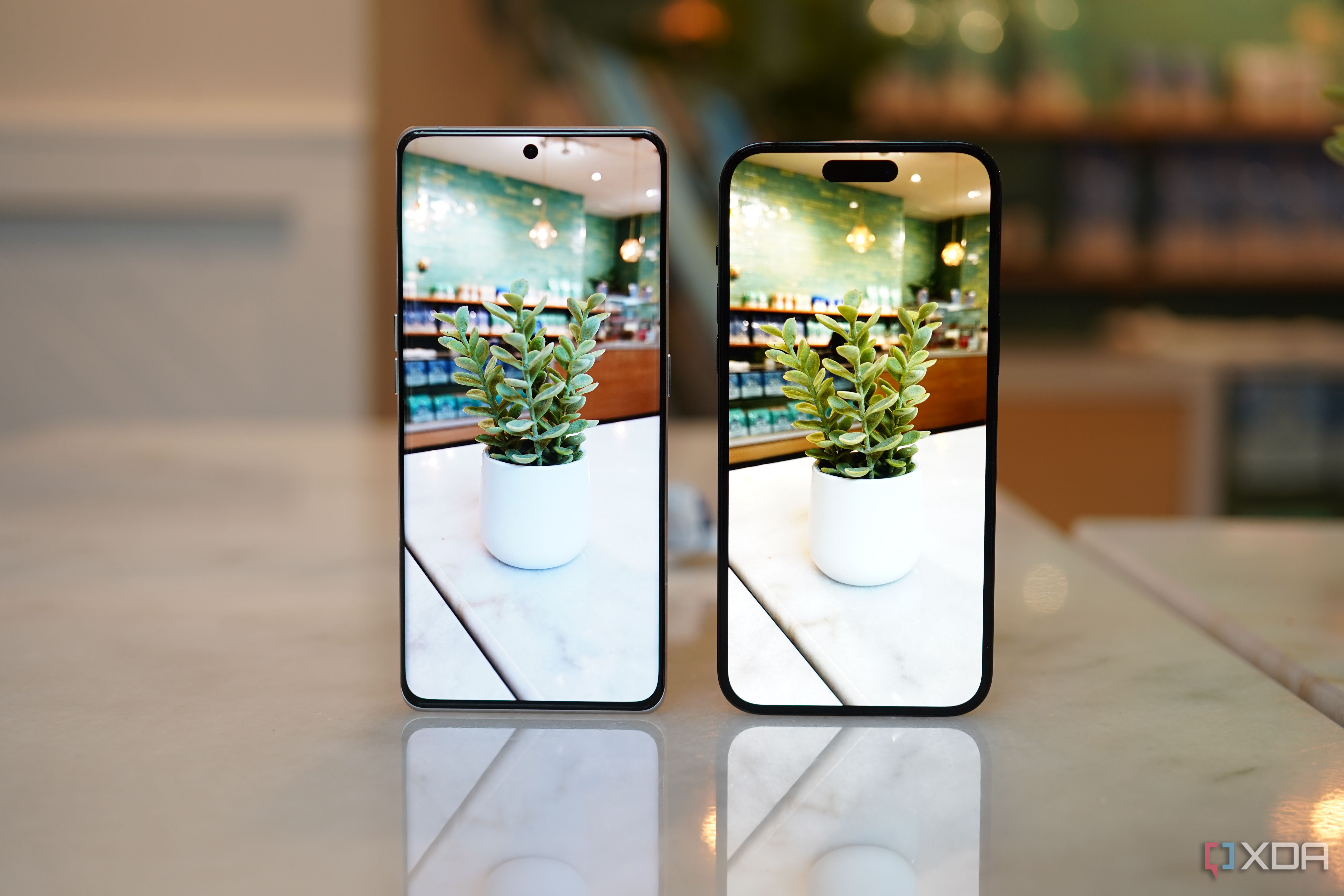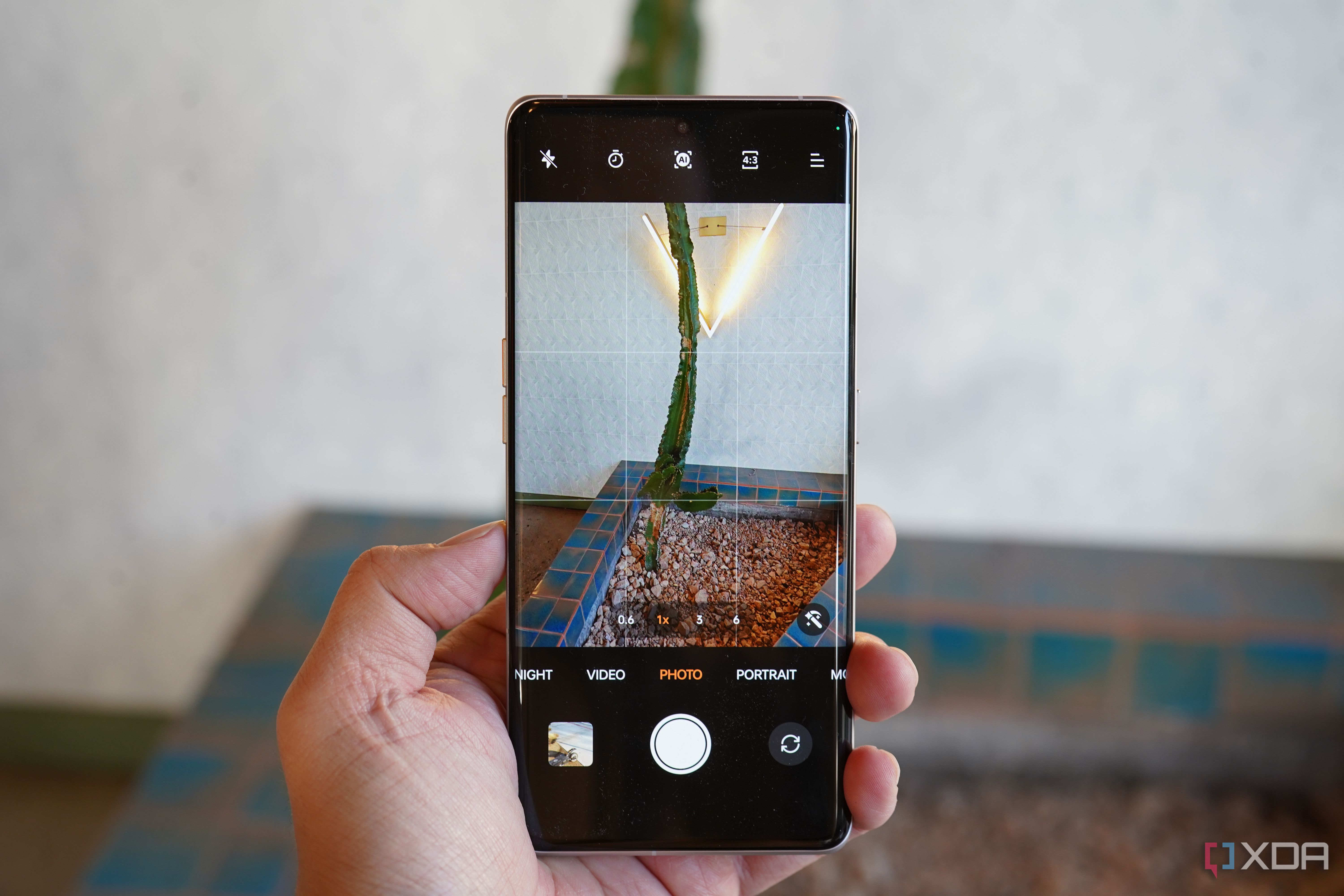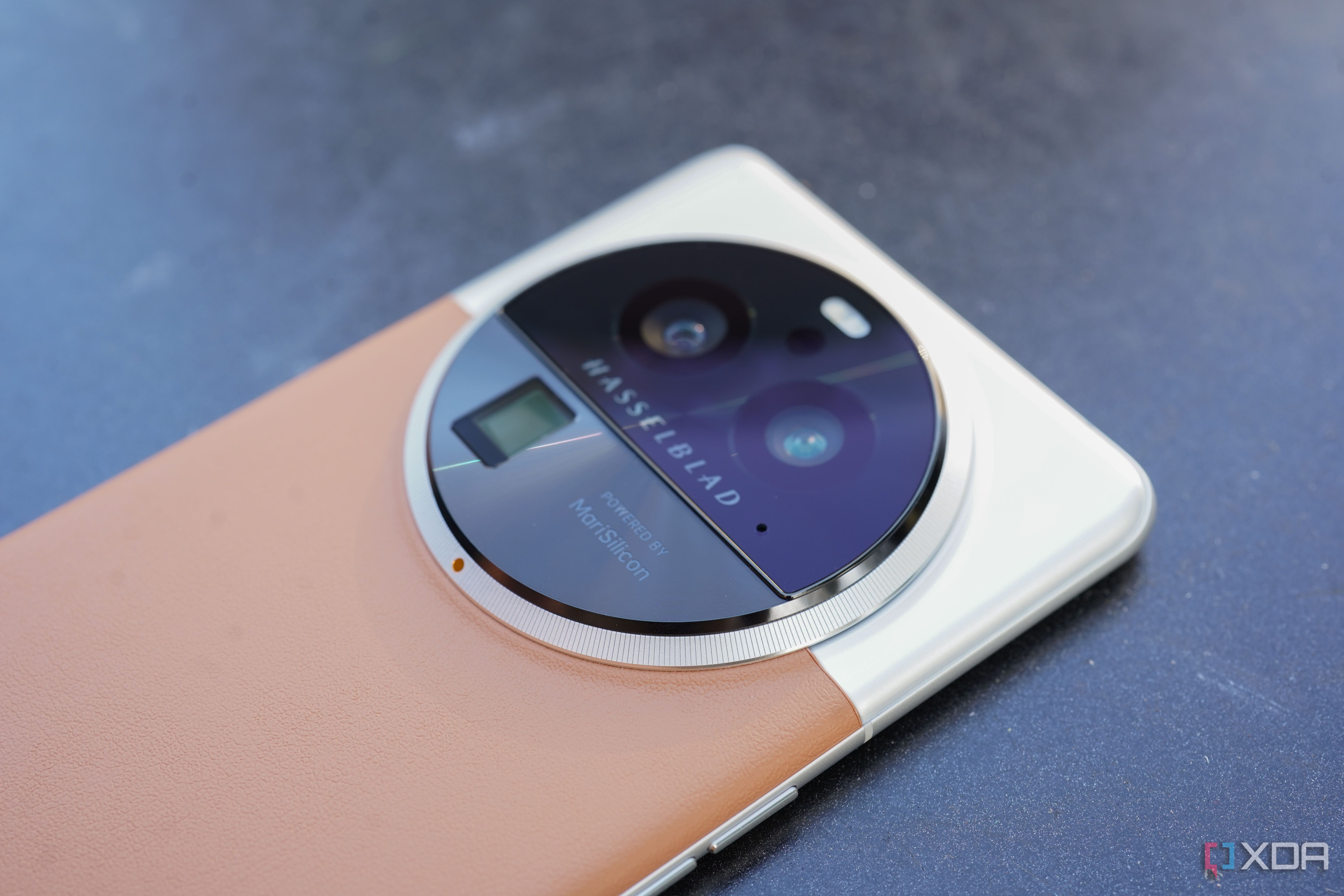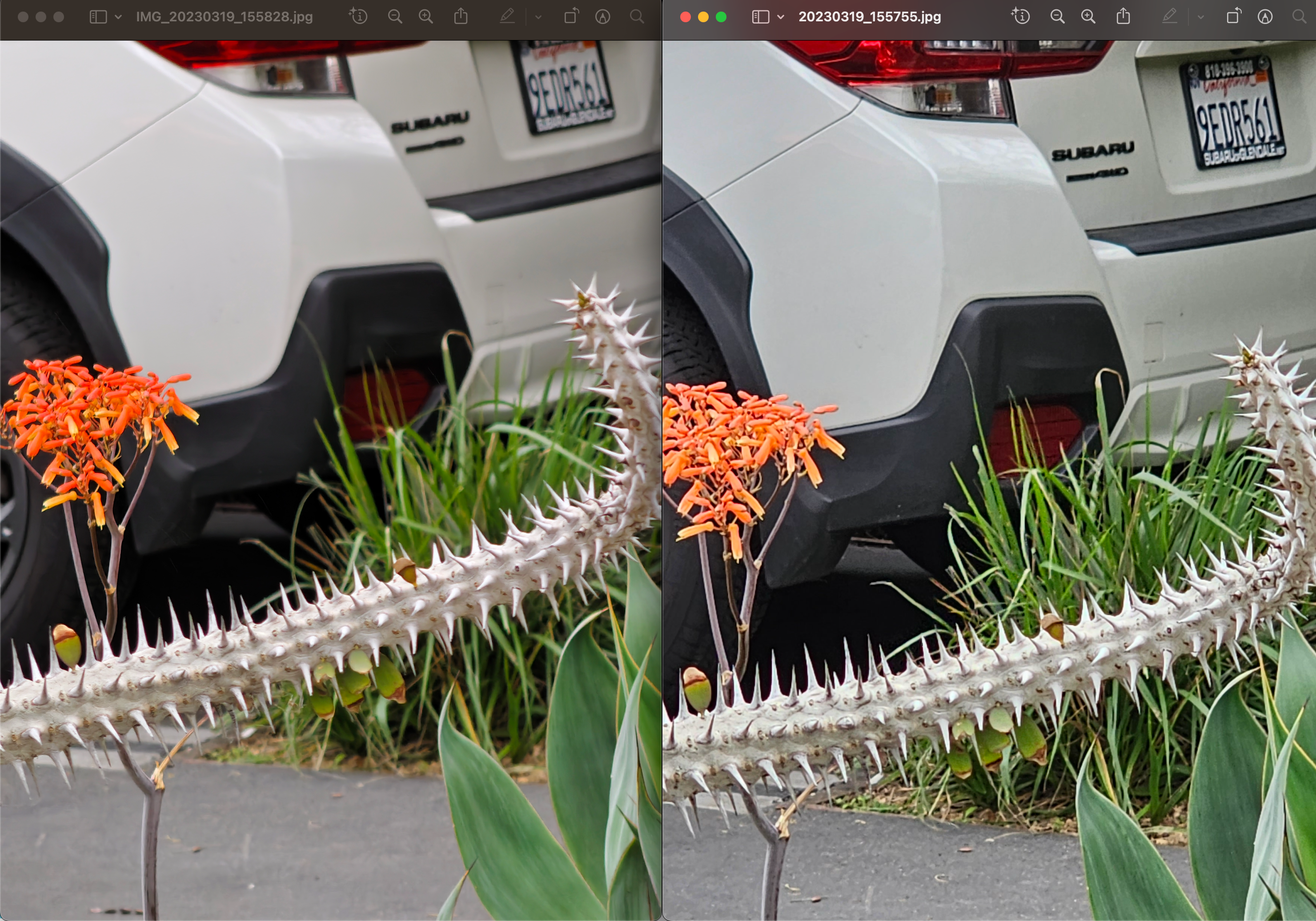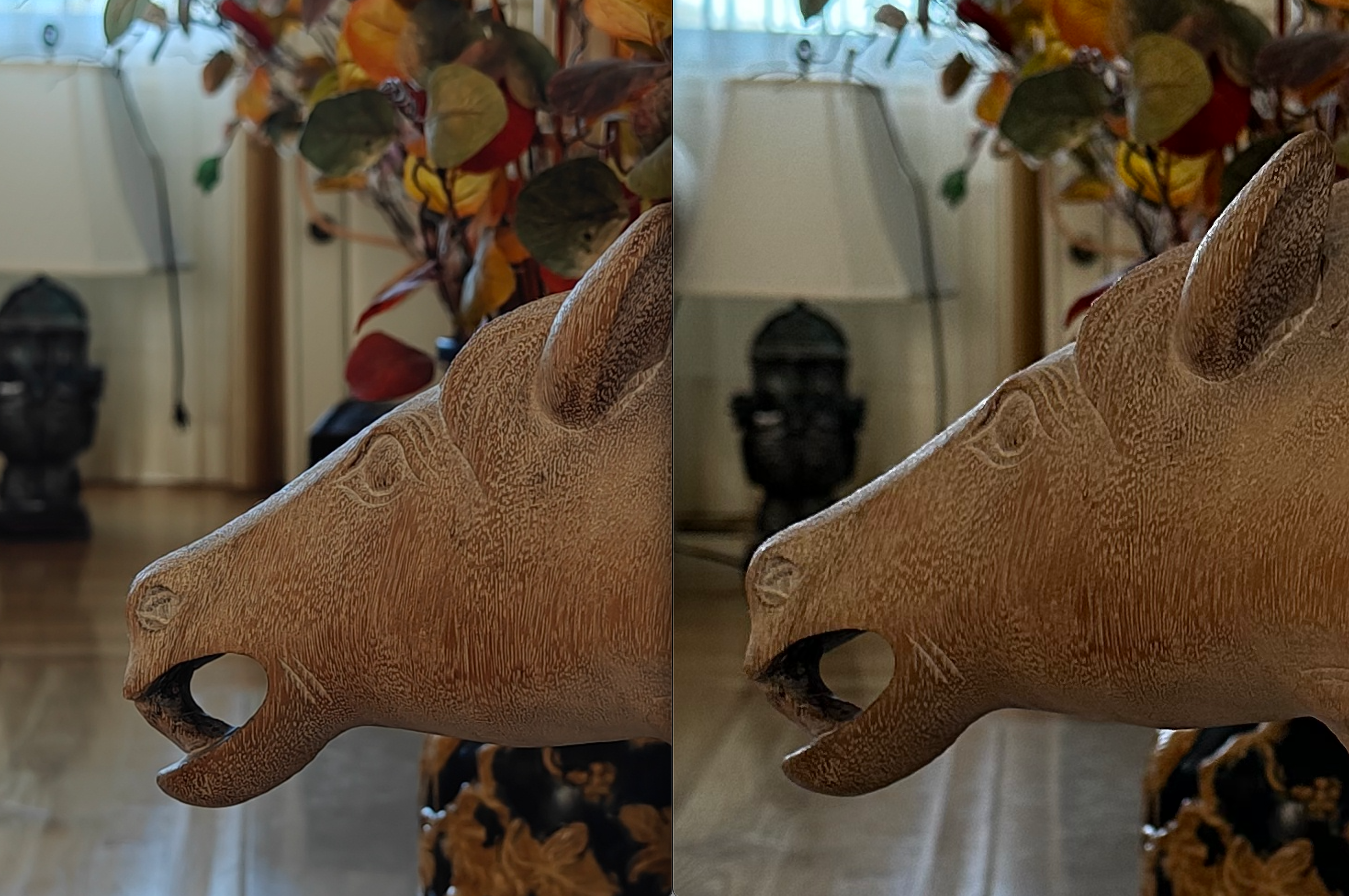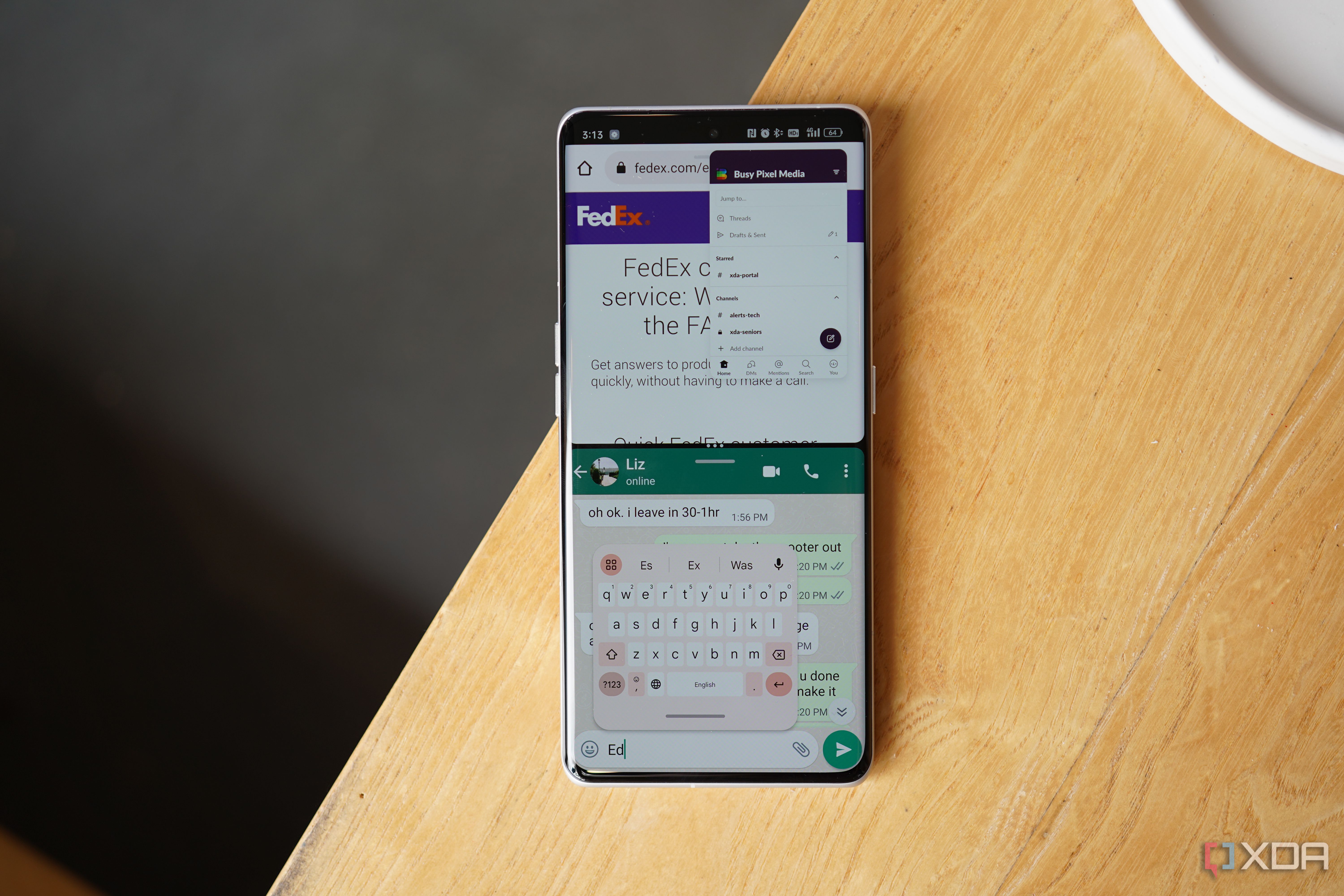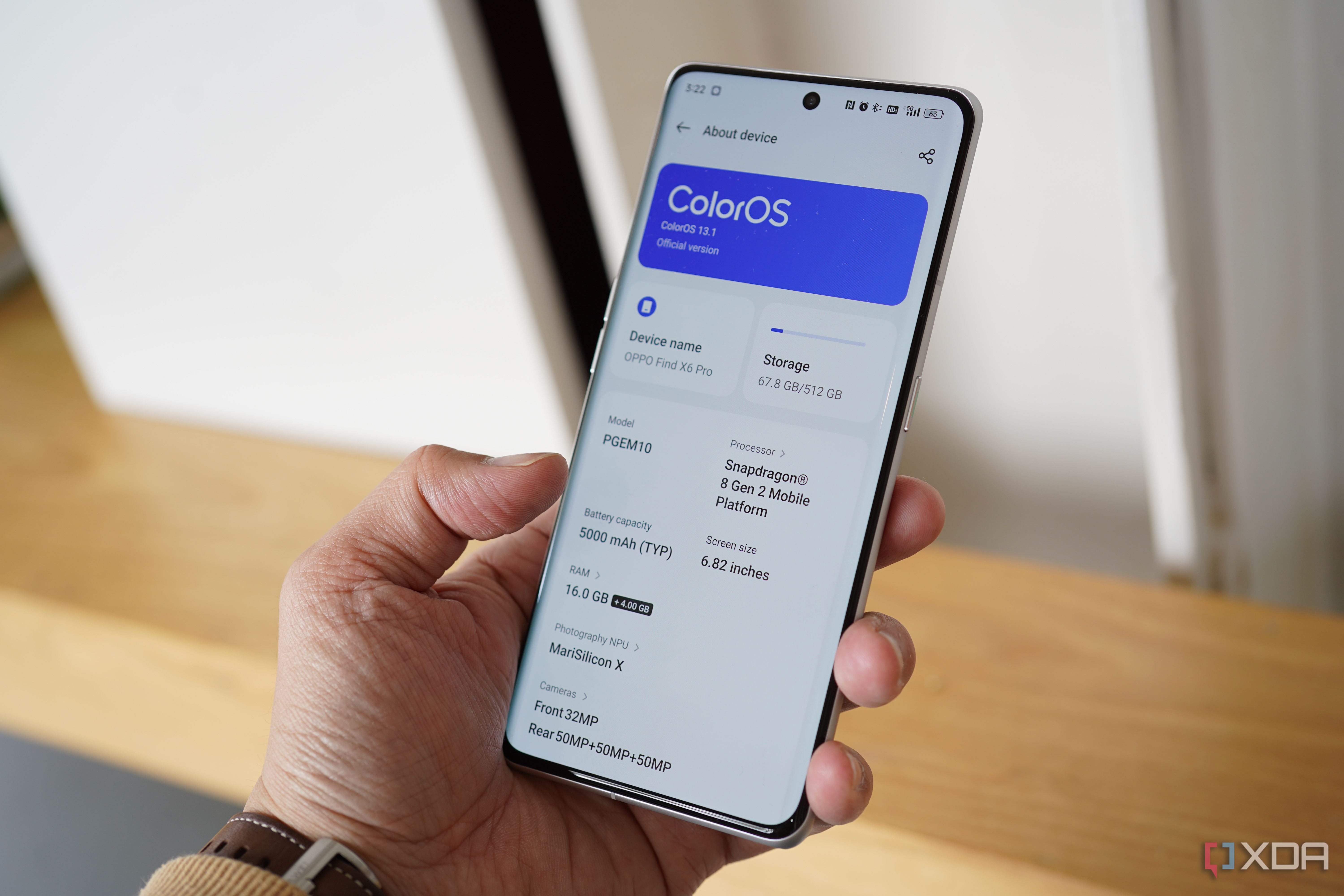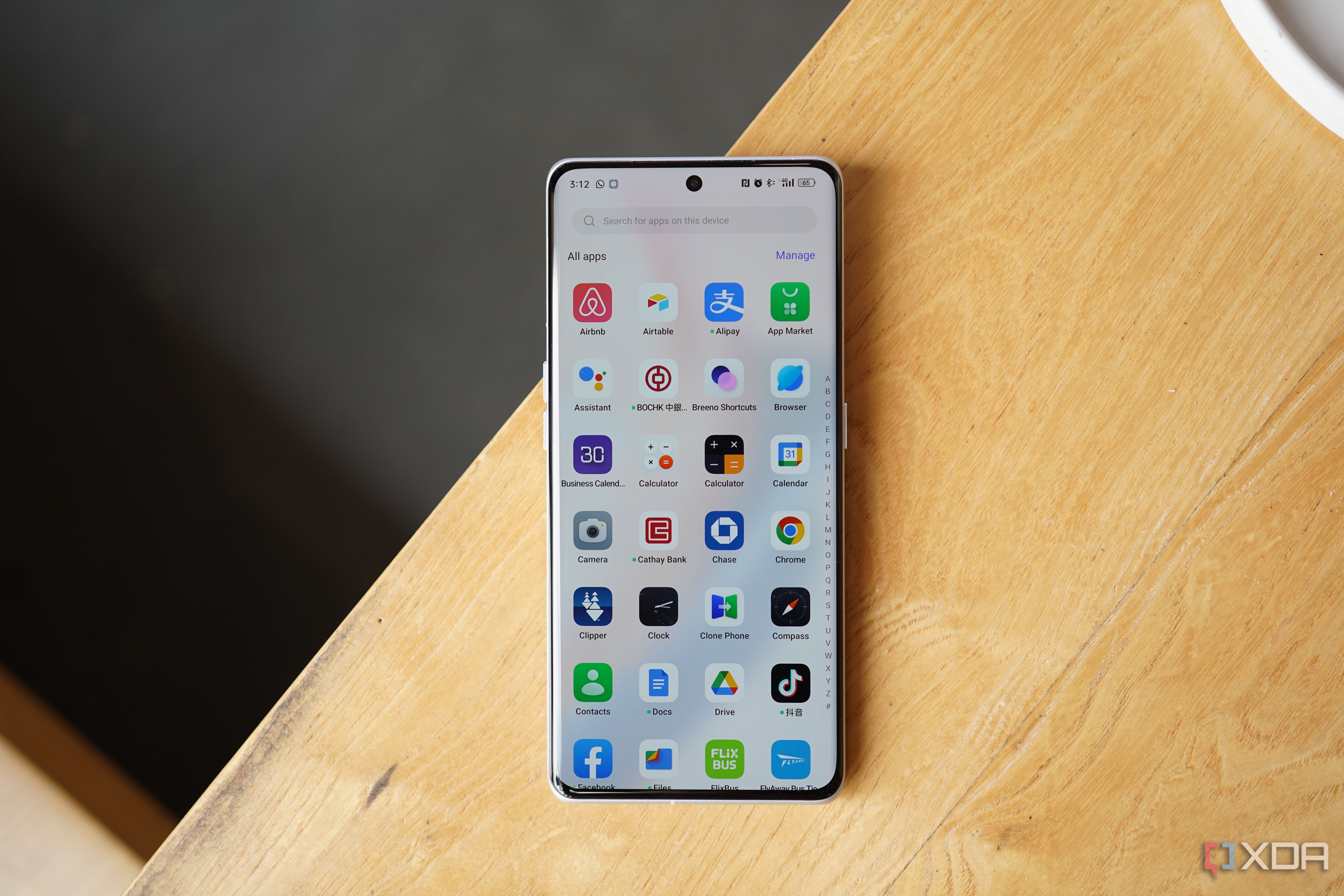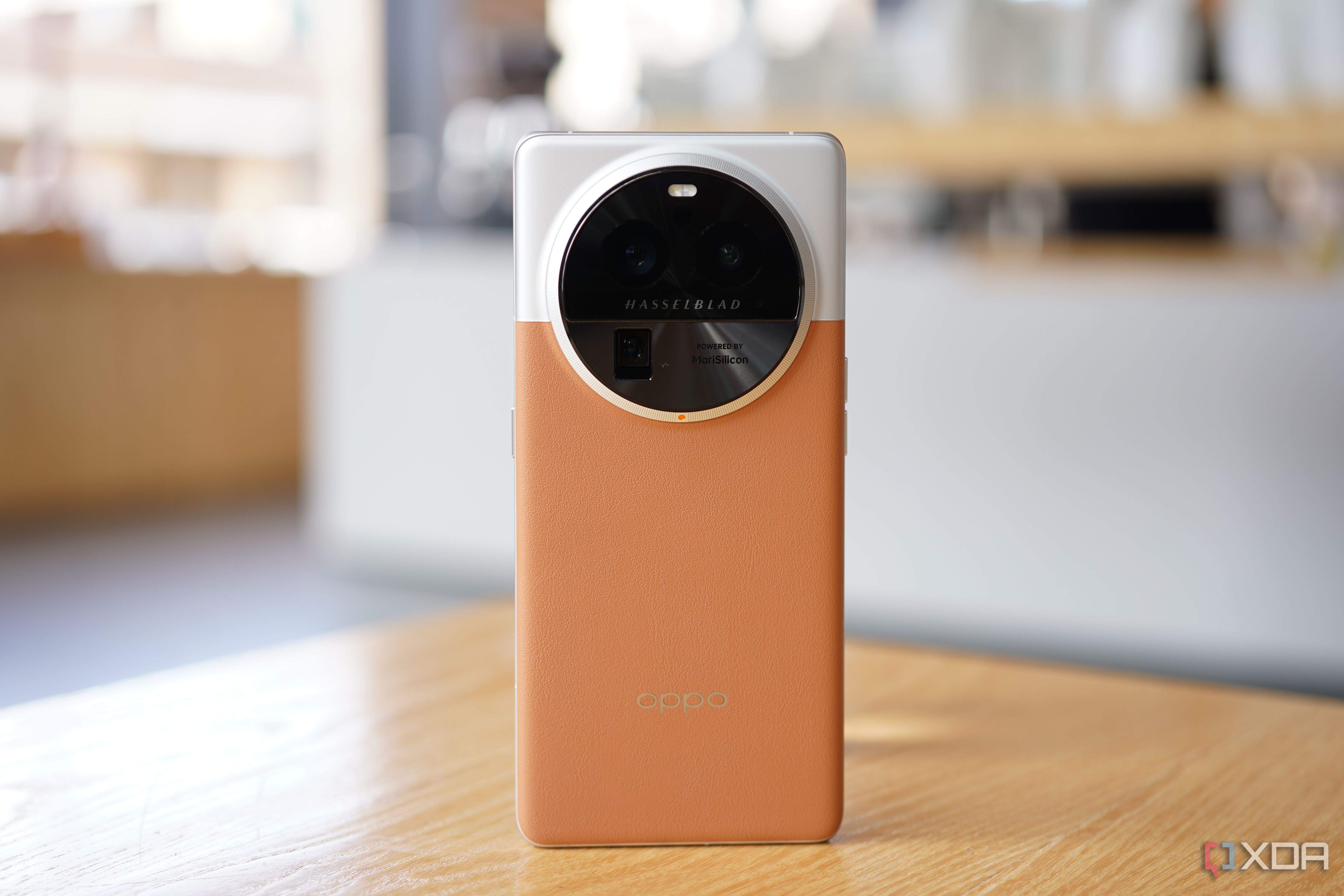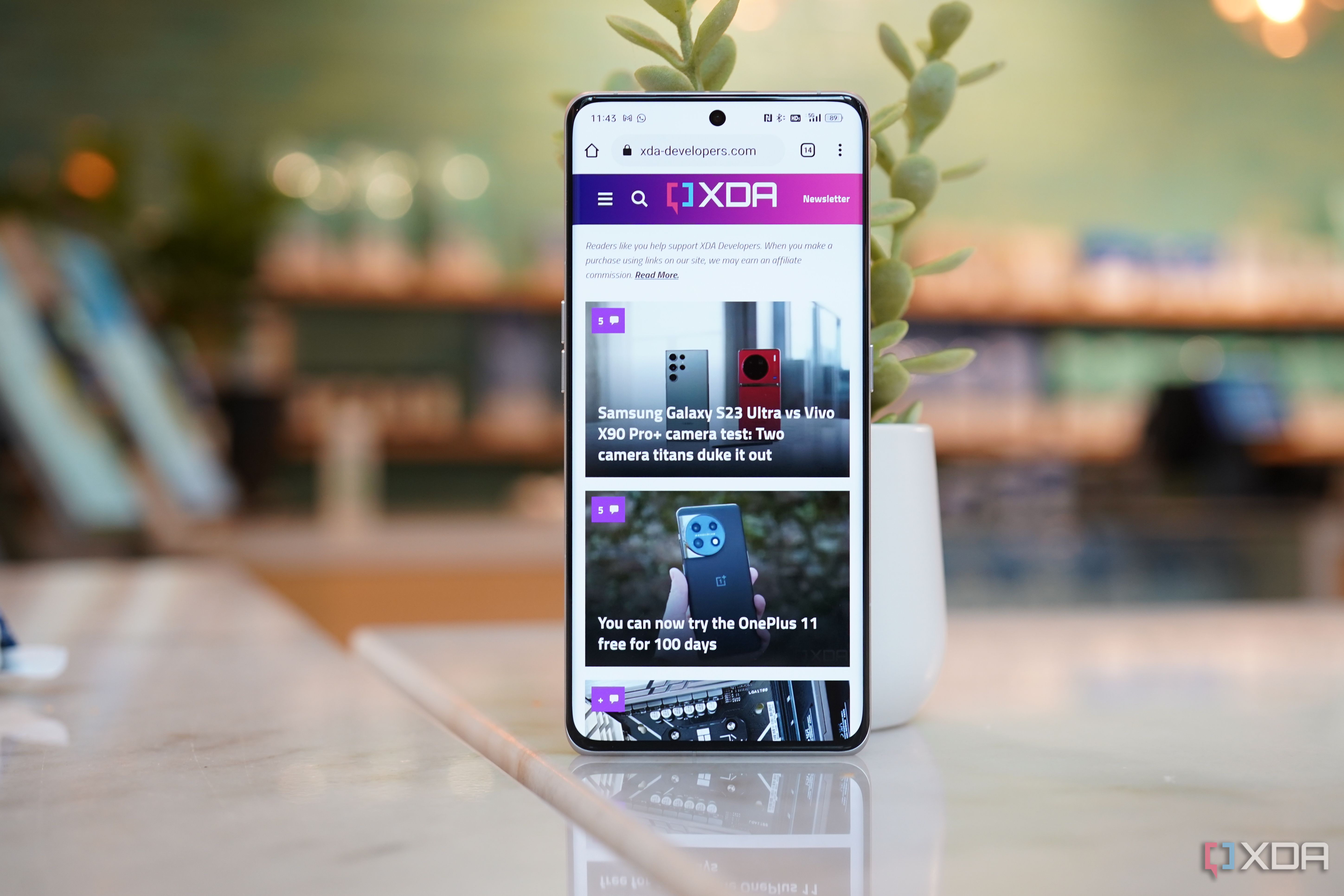Quick Links
Here's a random bit of smartphone trivia: The periscope zoom lens, a sensor that is mounted horizontally inside a phone's body, was actually an Oppo-funded innovation despite its frequent association with Samsung. The periscope camera would go on to make its way to virtually all the best Android phones, including some Oppo devices in 2019, but for reasons unknown, was dropped from the brand's products.
Well, the periscope zoom is back in an Oppo device for the first time in three years on the Find X6 Pro — and what a triumphant return. The new periscope camera features the largest image sensor and most wide open aperture of any periscope camera on the market right now, which means it can pull in more light and produce shallower depth-of-field for natural bokeh. I've snapped dozens of zoom photos over the past week and a half, and yes, the Oppo Find X6 Pro is the new zoom king. Its periscope is better than the ones on the Galaxy S23 Ultra or Vivo X90 Pro+.
The rest of the phone is excellent too, with a brilliant screen, fast performance, and two more great cameras with larger sensors than most phones on the market. But, unfortunately, in what is becoming an annoying trend, this hardware beast is only sold in China for now. But if you care about mobile technology, you'll want to see what Oppo has built here anyway. Who knows, maybe this camera setup will make its way to a OnePlus phone eventually.
About this review: Oppo sent us a Find X6 Pro for the purposes of this review, and it did not see its contents before publishing.

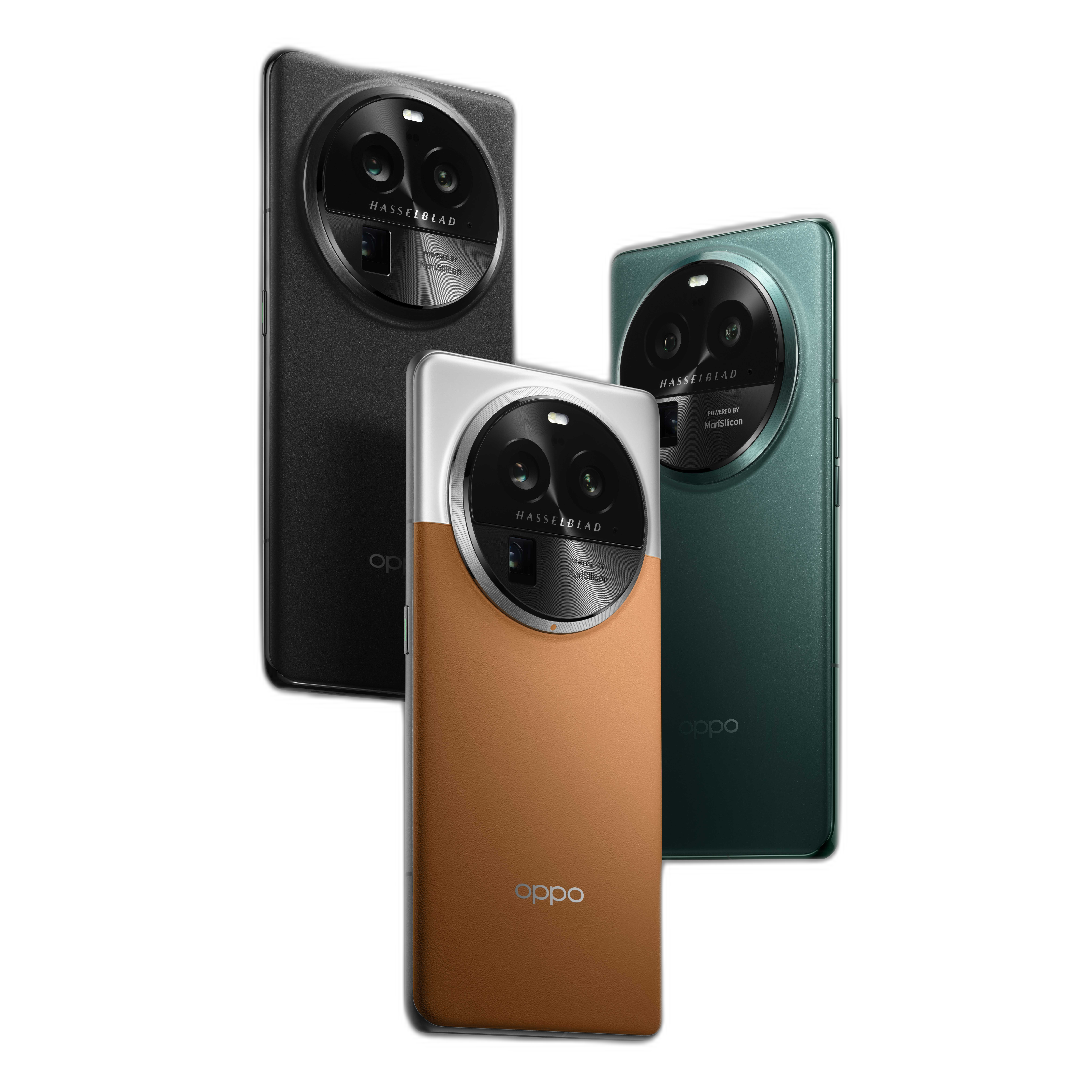
Oppo Find X6 Pro
The Oppo Find X6 Pro has the most impressive camera hardware right now, and the rest of the phone is good too. It's just too bad it's only sold in China.
- Brand
- Oppo
- SoC
- Qualcomm Snapdragon 8 Gen 2
- Display
- 6.8-inch OLED, LTPO 3, 120Hz, 1440 x 3168, 2500 nits max brightness
- RAM
- 12/16GB RAM
- Storage
- 256/512GB
- Battery
- 5,000 mAh
- Ports
- USB-C
- Operating System
- Android 13
- Front camera
- 32MP
- Dimensions
- 164.8 x 76.2 x 9.1 mm or 9.5 mm
- Colors
- Two one (leather and glass); green; black
- Weight
- 216g
- IP Rating
- IP68
- Best zoom lens, particularly in low light conditions
- Beautiful, classy design
- Two other huge image sensors
- The 1-inch main camera sensor could be better optimized
- Battery life won't be great for some
- Only sold in China
Oppo Find X6 Pro: Price and availability
The Find X6 Pro is only officially sold in China for now. The good news is the phone is relatively cheap for a device of this caliber, retailing in China starting at 5999 yuan (around $872) for the base 12GB RAM, 256GB storage variant. Even the most expensive model, with 16GB RAM and 512GB of storage, is selling for 6999 yuan (around $1,017). This means if you want to import one from a reseller, even with the usual reseller markups and shipping fees, you can get the base model for less money than what a new Galaxy S23 Ultra would cost you.
Of course, only enthusiasts import phones, as it's too complicated and risky for the average consumer to do. But hey, if you're reading this far down, chances are this is something you're interested in.
Hardware and design: Just a beautiful phone
- Elegant-looking two-tone design
- Giant camera module
- Huge battery with fast charging speeds
The Find X6 Pro is among the top three most beautiful phones I've ever held. I've always been a fan of circular camera modules, leather finishes (even if it's fake "vegan" leather), and two-tone designs, and the Find X6 Pro gives me all three — at least this variant. There are two other versions that are purely solid-colored glass backs without vegan leather.
The camera module is gigantic, but it's necessary because the triple camera sensors here, particularly the main camera's 1-inch sensor, are relatively large by phone standards. The circular camera module is surrounded by a textured bezel, with a dot at the bottom similar to the camera lens alignment marker seen on "real" cameras.
Other than the gigantic camera module and two-tone back finish (the top half is Gorilla Glass 5), the rest of the Find X6 Pro's design is very similar to recent top offerings from OnePlus and Vivo (all three brands share the same parent company). Whether it's screen curvature, hole-punch cutout placement, and general dimensions and weight, the Find X6 Pro feels very similar to the OnePlus 11 and Vivo X90 Pro+.
I find the phone to be slightly wide and heavy; it doesn't feel as comfortable as the lighter OnePlus 11 or slightly narrower Xiaomi 13 Pro. Aside from that, I've carried the phone as my daily driver for well over two weeks across multiple cities in California without problems.
As expected, all the components are the latest standard: Qualcomm Snapdragon 8 Gen 2, 12 or 16GB of LPDDR5X RAM, and 256 or 512GB of UFS 4.0 storage. The model I tested is the highest tier model with the most RAM, and performance was snappy, as expected. The large graphite cooling system kept the phone cool even after running the 20-minute Wild Life Extreme Stress Test.
Elsewhere, the phone has an IP68 water and dust resistance rating. The haptic engine is strong and precise like in the OnePlus 11, and there are stereo speakers which are fine, but not as great as the iPhone 14 Pro's or Galaxy Z Fold 4's.
Display: The brightest screen on the market right now
- The brightest display of all smartphones right now
- You'll get QHD+ resolution and a variable refresh rate
The Find X6 Pro's 6.8-inch OLED panel features QHD+ resolution and variable refresh rate between 1 and 120Hz. It supports HDR, Dolby Vision, 10-bit color, and all the other technical jargon. But none of this is unique; there are like 11 other phones with panels that can make those claims. But there's one thing the Find X6 Pro's display can brag about: its 2,500-nit maximum brightness.
This is higher than the previous champion, the iPhone 14 Pro's 2,000 nits, and significantly higher than the Galaxy S23 Ultra's 1,750 nits. While human eyes can't perceive nits linearly, so the gap isn't as jarring as the numbers, the Find X6 Pro screen is noticeably more visible under harsh sunlight than a phone with average maximum brightness, like the Pixel 7 Pro. You can see it in the image below, with the Find X6 Pro's screen at 80% brightness next to the iPhone 14 Pro Max at 100% brightness.
Cameras: Large sensors for every lens
- The Find X6 Pro has a triple-camera system
- Each lens has the largest image sensors in its category
- The periscope zoom lens produces clearly sharper, less noisy images in low-light conditions
The Oppo Find X6 Pro's main camera, unsurprisingly, uses the same 50MP Sony IMX989 1-inch type sensor that's been seen in recent top phones from Xiaomi and Vivo. While this lens is easily the best camera sensor in smartphones today, it's also nothing new to those who follow the Chinese flagship smartphone scene. The Find X6 Pro is the fifth phone to use this sensor in the past seven months.
Instead, what's innovative with the Find X6 Pro is that its ultra-wide camera and periscope zoom lens both use the same IMX890, 1/1.56-inch image sensor, which is the same size as the main cameras of phones like the Galaxy S23 and iPhone 14 Pro. This is great news because larger sensors can collect more image information, producing photos and videos with more details, dynamic range, and depth.
However, there's more to producing a great smartphone image than just sensor size. You also have to think about factors like software image processing (which is arguably as important these days as hardware). But Oppo makes big claims here too, with a self-developed NPU chip handling image processing, as well as a partnership with Swedish legacy camera maker Hasselblad to fine-tune the color science. Let's see how the Find X6 Pro does.
The first test is to see whether the three 50MP cameras produce consistent colors and dynamic range of the same scene. The Find X6 Pro passes this relatively challenging test, shooting directly against harsh backlight, with some corners of the indoor space covered by shadows. Do note Oppo's images blow out the harsh sunlight coming through the windows. It is uncertain whether this is on purpose, due to Hasselblad wanting to keep images and colors natural, or below par HDR. A Galaxy S23 Ultra or Vivo X90 Pro+ would have used HDR software wizardry to artificially expose the window to show the blue skies outside.
The Find X6 Pro's main camera features all the traits of a large image sensor, with very shallow depth-of-field producing strong bokeh, and a more organic vibe with less processing. Like other phones with the IMX989 1-inch sensor, the Find X6 Pro does not resort to night mode as easily as other phones from Samsung or Google.
However, this extremely shallow depth-of-field gives photos a more professional look, but that can be detrimental because the parts of a subject can be slightly out of focus if they're a couple of inches closer or further from the sensor, like you can see in the examples below from the Find X6 Pro and Galaxy S23 Ultra.
Notice Oppo's image (left) has much stronger bokeh and more depth compared to Samsung's relatively flat photo and has less noise and digital processing. However, Oppo's image couldn't keep focus entirely on that spiked plant — its ends are out of focus.
Still, generally speaking, the large sensor camera just captures images with so much more depth than smaller sensor cameras. Here's another side-by-side sample of a Find X6 Pro main camera and iPhone 14 Pro Max's main camera.
And here are the images cropped in. The Find X6 Pro's image has stronger and more natural bokeh. The iPhone's background look overly processed.
I'm not the biggest fan of Oppo's processing when compared to Vivo's. The latter's X90 Pro+ uses the same 1-inch hardware, but side-by-side, I generally prefer Vivo's color science and exposure. The Find X6 Pro tends to blow out highlights, while Vivo uses HDR wizardry to properly expose all the light sources. I'm not sure if Oppo's over-exposure is by design or simply HDR gone wrong.
Moving on to the zoom lens, this is where Oppo shines and beats all competition. The Find X6 Pro's 3X zoom lens having a larger image sensor and more wide open aperture (f/2.6) really makes a difference, as images exhibit noticeably less noise, more details, and natural bokeh. Let's look at some 3X zoom images between the Oppo Find X6 Pro and the iPhone 14 Pro Max's 3X zoom lens.
However, the iPhone, which uses a conventional telephoto lens, doesn't even really belong in this discussion. Let's look at how Oppo's zoom lens fares against the Galaxy S23 Ultra's. Below are 3X zoom samples of my dad, and a Bruce Lee statue.
These shots all look great when viewed in a scaled-down format on a phone screen. But zoom in or view on a larger monitor, and Oppo's zoom photos are noticeably more detailed. Look at how it accurately depicted my dad's wrinkles, which are missing from Samsung's image. In the low light image of the statue, Samsung's image is noisier and softer.
You may be thinking this isn't a fair comparison, because Samsung's 3X zoom images are captured by a telephoto lens. Samsung's periscope lens, instead, is used for 10X zoom shots. But even in 10X zoom images, where Oppo has to digitally crop into its 3X zoom sensor, the Find X6 Pro's 10X shots hold up well against the S23 Ultra's.
Because the Find X6 Pro's periscope has a much larger image sensor (1/1.56-inch) and faster aperture (f/2.6) than the S23 Ultra's Periscope (1/3.52-inch and f/4.9), Oppo's 10X images completely blow the S23 Ultra's 10X shots out the water in low light situations, as you can see in the images above.
It's not all great, however. Once you zoom beyond 20X or so, the Find X6 Pro starts oversharpening photos. The phone allows zoom up to 120X, but photos snapped at 120X look like an impressionist painting more than a real photo. I'd rather Oppo just cap the digital zoom to 50 or 60X. But stick to 20X or below, and the Find X6 Pro's zoom lens is the most reliable right now, even with other phone's software processing.
The same is true for the Find X6 Pro's ultrawide camera, which just has a better sensor than what anybody else is using. Photos are a bit noisier and sharper, particularly at the edges where ultrawide shots usually suffer. But the quality gap isn't as important or noticeable, because ultrawide photos are for capturing sweeping landscape shots.
With such an industry-leading, rear-facing camera system, the 32MP front-facing camera is, unfortunately, a bit of a letdown. It can still only shoot at a maximum of 1080p resolution in videos, and stabilization and dynamic range are both behind what the Galaxy S23 Ultra or iPhone 14 Pro could do. Still, photos look fine enough.
Software: OnePlus users would be familiar
- The phone runs Android 13 with ColorOS 13 on top
- Full of customization options
- But China's version of the software has all the expected quirks and frustrations
The Find X6 Pro runs on Android 13 with Oppo's ColorOS software on top. My colleague Adam Conway has written an in-depth review of ColorOS 13, and I've covered it several previous phones, so let's just keep this part short: ColorOS is fast, fluid, and full of customization options. You can launch an app in a floating window, for example, with an exaggerated swipe-up instead of doing multiple taps like on other phones. You can grab a screenshot by swiping down with three fingers. The software is full of these features, as well as some intelligent ones like automatically pixelating screenshots to hide sensitive information.
But ColorOS is not everyone's cup of tea, and this specific China version launches with a bunch of Chinese bloatware apps (which thankfully can be uninstalled), and the phone's aggressive battery background management could kill apps, thus resulting in delayed notifications. I found a solution to this problem by turning off battery optimization and locking some crucial apps to the background, but it is annoying to have to take these steps.
Oppo is guaranteeing four years of Android updates and five years of security patches, which is better than even Google's own offering for its Pixel phones. Overall, I don't have many issues with ColorOS, but I understand why some dislike it.
Overall performance: fast, powerful
- There's a minor Instagram touch delay bug, but otherwise, performance has been fine
- The phone scores high on all benchmarks
With Snapdragon 8 Gen 2 and 16GB of RAM, the phone is certainly not lacking in power, and in my days of using the phone, I've encountered almost no issues. I did get an Instagram-exclusive bug where the app would lose touch sensitivity when viewing a Story, and I didn't get it anywhere else.
Benchmark numbers are good as expected, and the thermals are impressive too. Whether it's running a 20-minute Wild Life Extreme Stress Test benchmark or fast charging the phone using the 100W charging brick, the back and sides of the phone only got warm, but not hot.
I found battery life to be just alright despite the large 5,000 mAh battery, probably because the phone's higher-than-usual maximum brightness and QHD+ resolution is a power-hungry combination. I've also been running dual SIM with the phone (both with 5G connectivity), so the battery has been draining fast, lasting me about 10-11 hours of use. I am a very heavy user, however, snapping at least 50-60 photos a day, and constantly creating Instagram Reels using clips that I edit directly on the phone.
Once I turn off the second SIM, battery life improved to last around 14-15 hours, but it's still not amazing. On a busy Saturday when I attended a wedding that included lots of driving with navigation (this is California, after all) plus photo snapping and text messages, the phone drained from 100% to 13% in seven hours.
The good news is it charges very, very fast. It can be topped up at 100W speed with the included charger. From my testing, the phone could go from 0 to 100 in a bit over 28 minutes. There's also wireless charging, with speeds up to 50W if you use Oppo's proprietary wireless charger.
Should you buy the Oppo Find X6 Pro?
You should buy the Oppo Find X6 Pro if:
- You want the best zoom and ultrawide cameras and you live in China
- You want the best cameras and can import
- You want the brightest screen
You should not buy the Oppo Find X6 Pro if:
- You don't want to import
The Oppo Find X6 Pro is the new zoom camera king, and one of the best-looking phones of all time. It also has some of the best cameras on the market, with photos that consistently look better than what the iPhone 14 Pro or Galaxy S23 Ultra could muster. But with this phone frustratingly selling only in China, it is once again another case of writing about a phone that most people can't buy.
Still, as I said at the beginning, this phone is still worth covering because its hardware is genuinely impressive, and these cameras may make it to a future OnePlus phone. I also think the next push in slab camera improvement is to increase the sensor size of the zoom lens, and that's exactly what Oppo has done. If the Find X6 Pro didn't exist, the best zoom camera right now would still be Samsung's Galaxy S23 Ultra, which uses a zoom system that's been recycled twice over since 2021. I'm glad Oppo is showing that there's room for improvement, and perhaps it'll get other brands to step it up.

